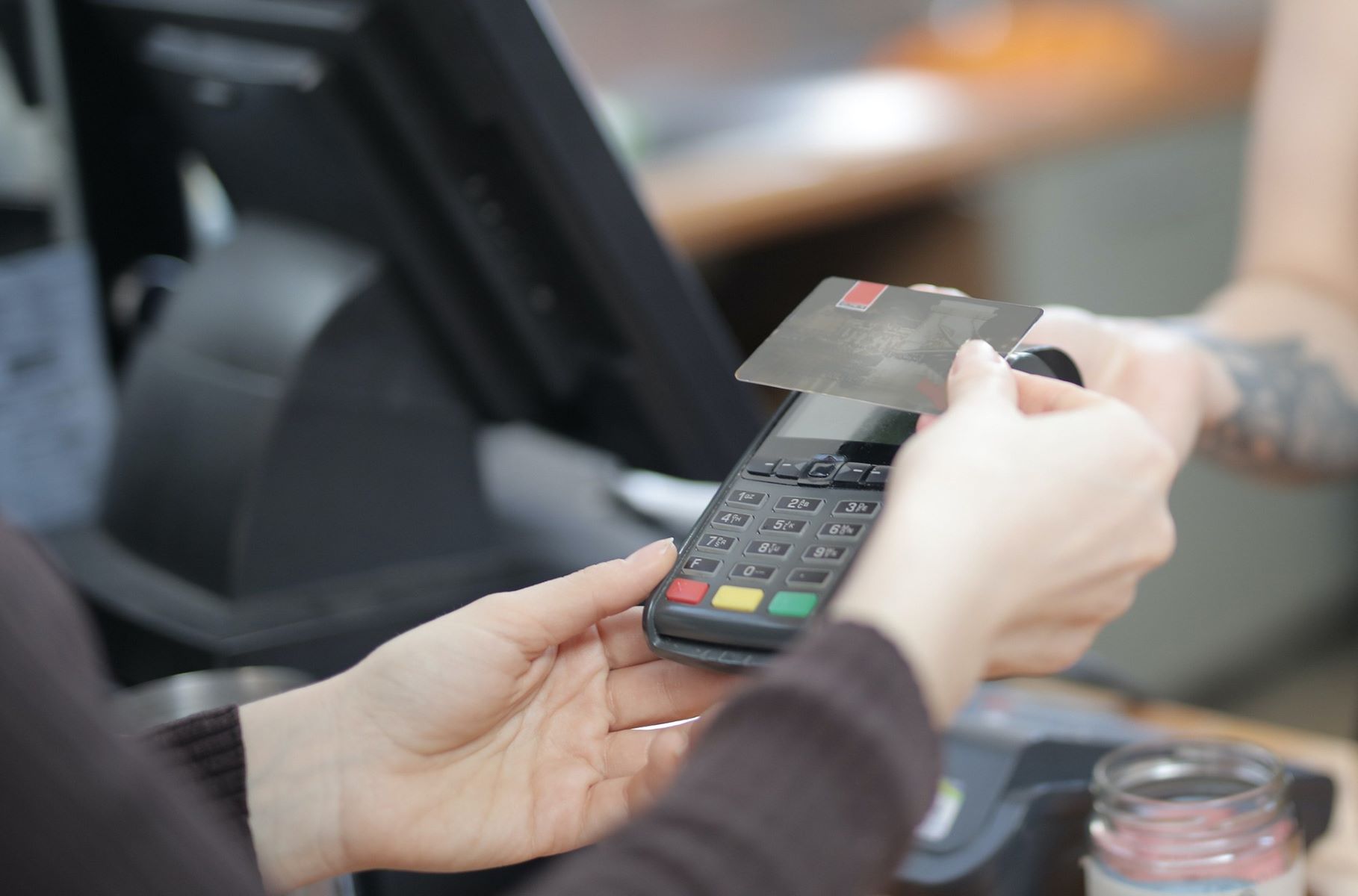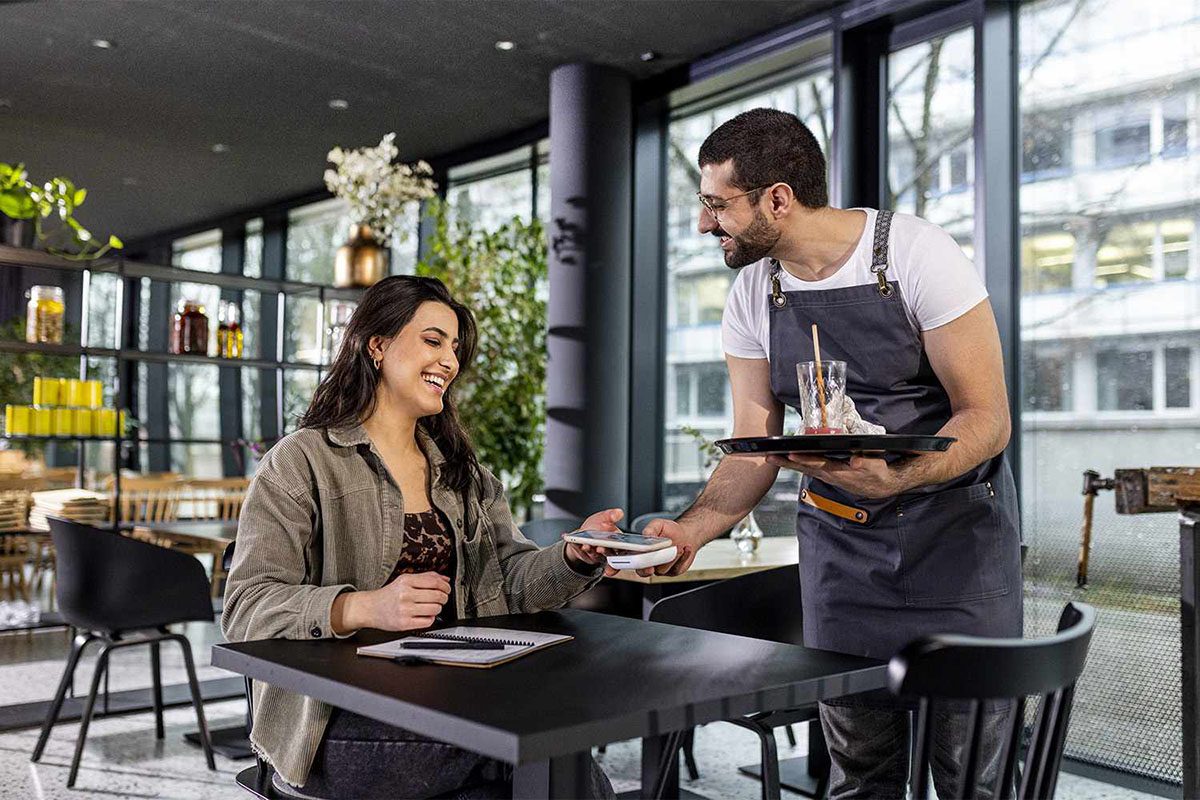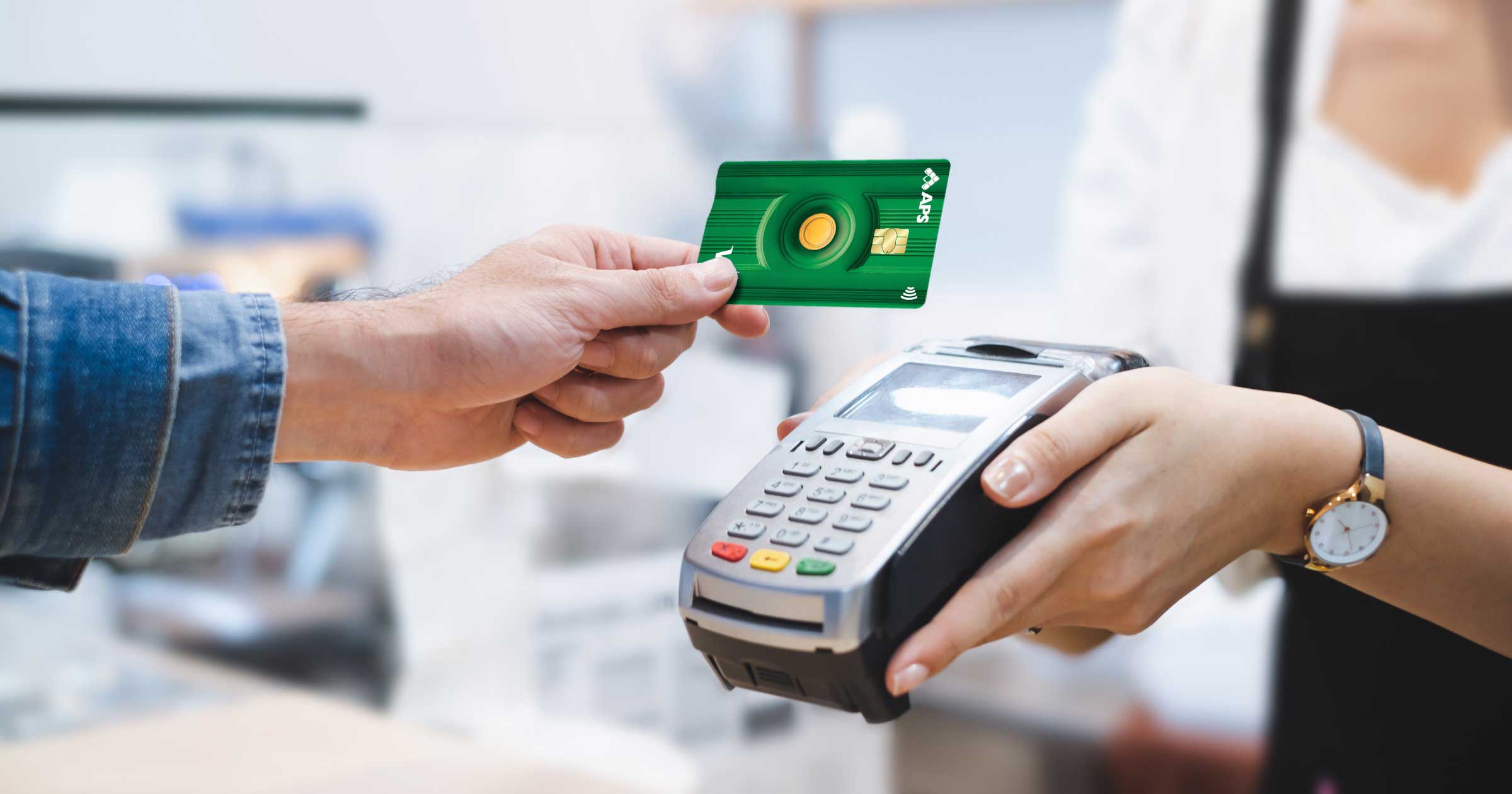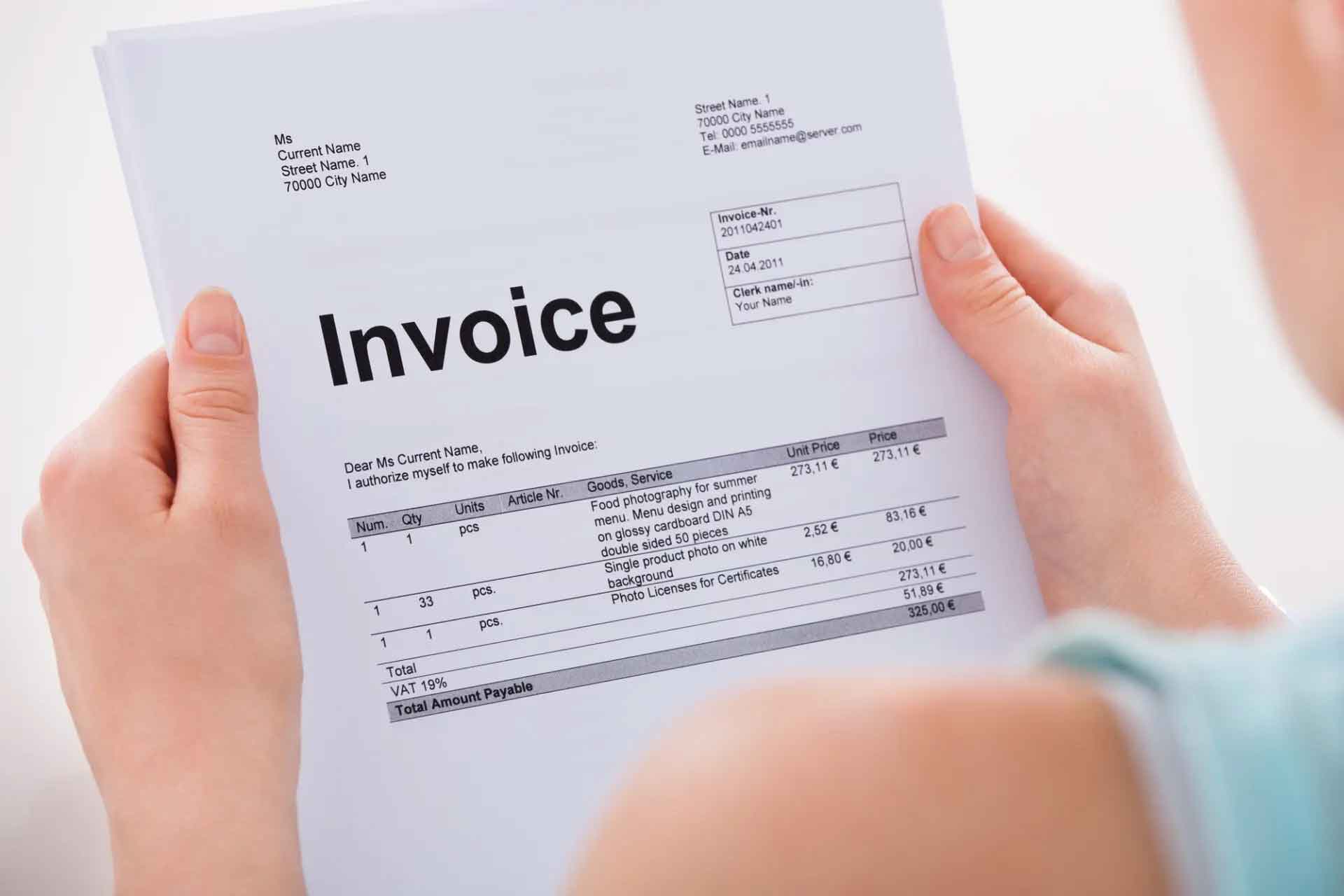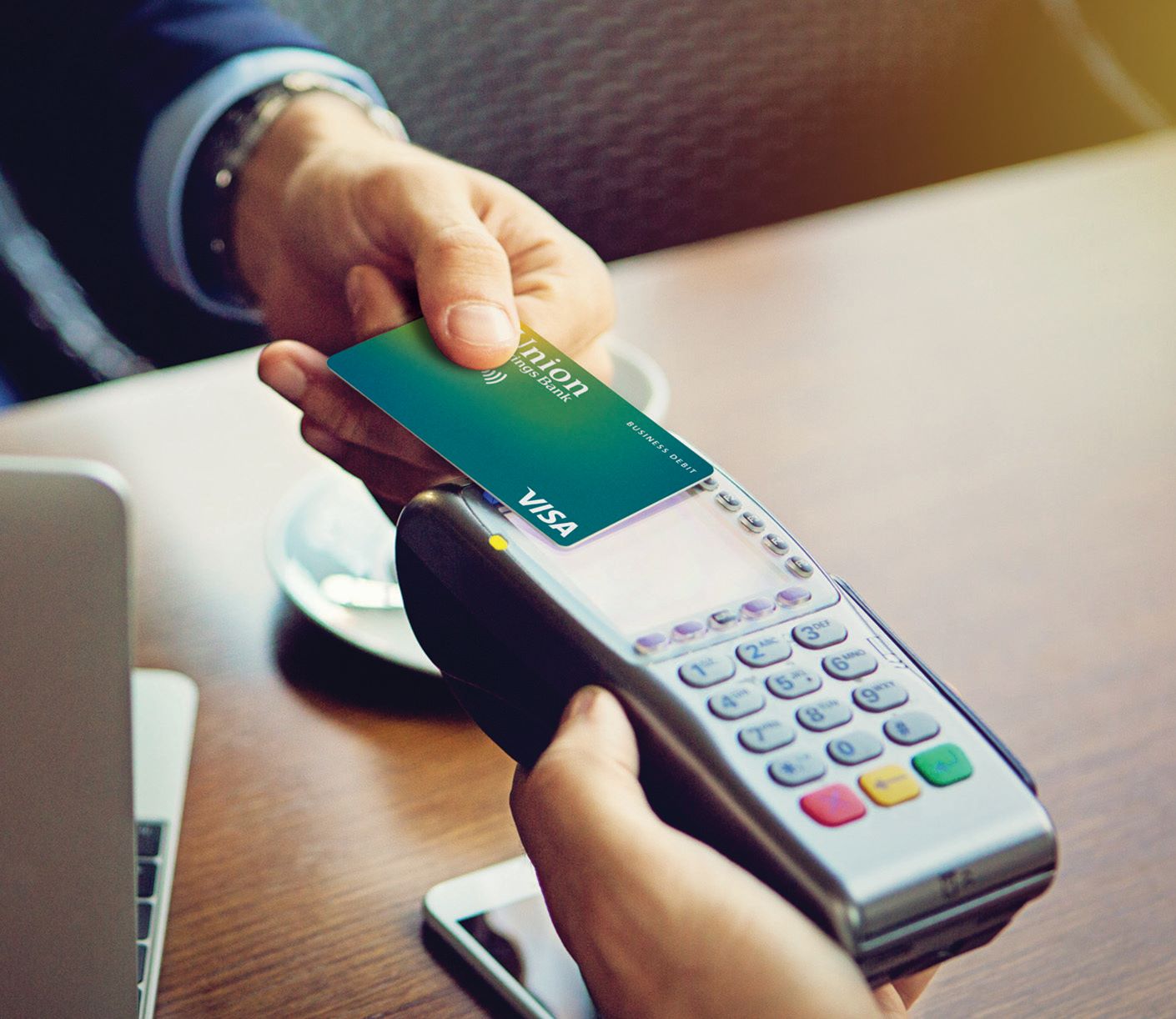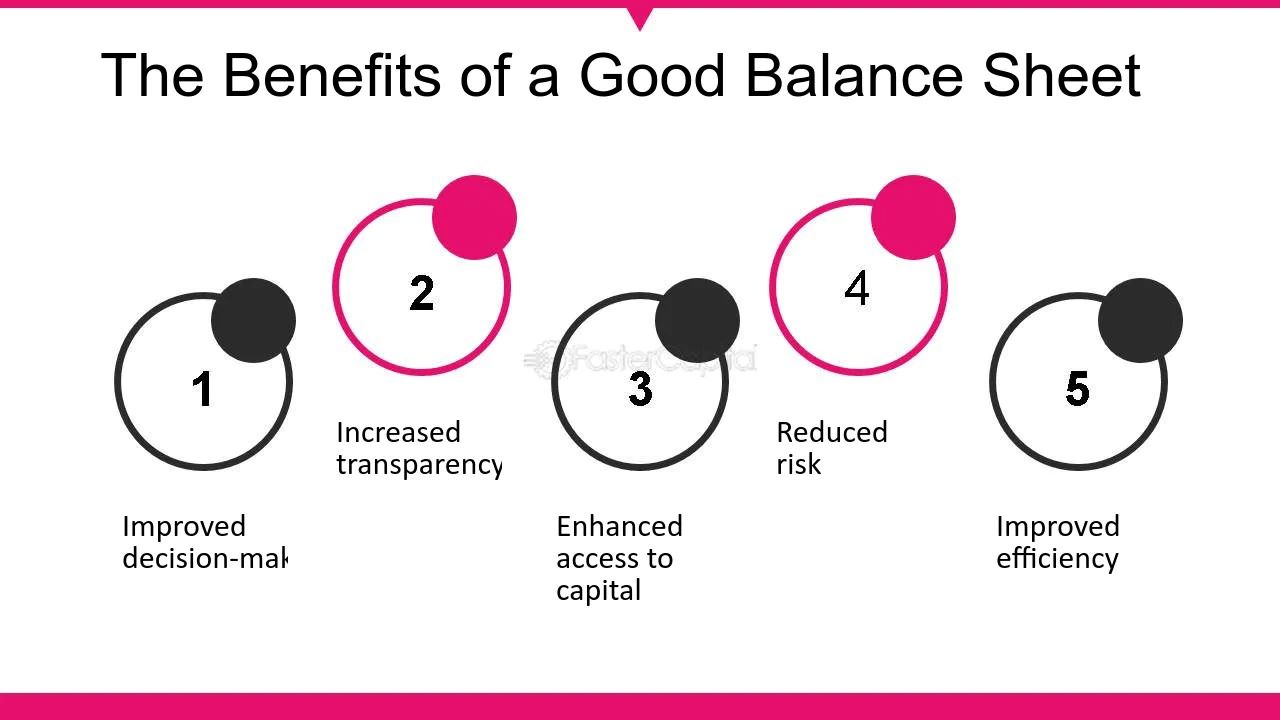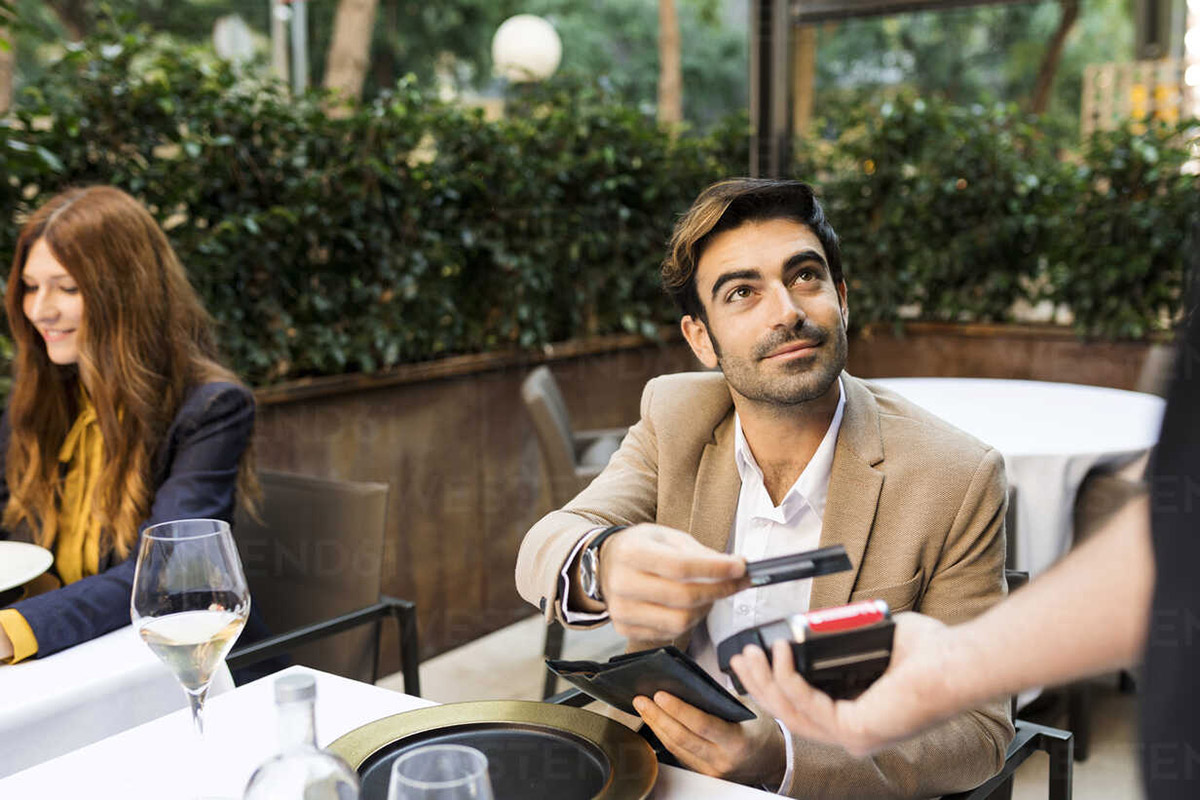

Finance
How To Pay At A Restaurant With A Credit Card
Modified: February 21, 2024
Learn how to pay for your restaurant meals using a credit card and manage your finances effectively. Discover tips for seamless transactions and easy expense tracking.
(Many of the links in this article redirect to a specific reviewed product. Your purchase of these products through affiliate links helps to generate commission for LiveWell, at no extra cost. Learn more)
Table of Contents
- Introduction
- Understanding Credit Card Payments
- Selecting a Restaurant that Accepts Credit Cards
- Informing the Waitstaff About your Payment Method
- Providing the Credit Card Information
- Signing the Receipt
- Tipping with a Credit Card
- Ensuring Payment is Processed Correctly
- Checking the Credit Card Statement
- Conclusion
Introduction
When it comes to dining out, credit cards have become a popular form of payment. With their convenience and security features, credit cards offer a hassle-free way to settle restaurant bills. However, if you’re new to using credit cards at restaurants, you may have some questions about the process. In this article, we’ll provide you with a step-by-step guide on how to pay at a restaurant with a credit card, ensuring a smooth and successful transaction.
Understanding the ins and outs of credit card payments is essential before venturing out to a restaurant. By familiarizing yourself with the process, you’ll know what to expect and be better prepared for any potential hiccups. From selecting a restaurant that accepts credit cards to ensuring the payment is processed correctly, we’ll cover all the necessary steps to make your dining experience a breeze.
So, if you’re ready to learn the ropes of paying at a restaurant with a credit card, let’s dive right in and explore the various aspects to consider.
Understanding Credit Card Payments
Before you head out to a restaurant and pay with your credit card, it’s essential to have a basic understanding of how credit card payments work. When you make a payment with your credit card, you are essentially borrowing money from the credit card issuer to complete the transaction. The credit card issuer pays the restaurant on your behalf, and you repay the issuer at a later date, either in full or through monthly installments.
It’s important to note that credit card payments can incur interest charges if you carry a balance from month to month. To avoid paying unnecessary fees, it’s wise to pay your credit card balance in full within the grace period, which is typically around 21-25 days from the end of the billing cycle.
Another crucial aspect to understand is the concept of credit card rewards. Many credit cards offer rewards programs that allow you to earn points, cashback, or airline miles for every dollar you spend. These rewards can add up over time and provide additional benefits when paying at restaurants or in other categories.
Keep in mind that not all restaurants accept credit cards. Some smaller establishments or cash-only establishments may not have the infrastructure in place to process credit card payments. To avoid any surprises, it’s always a good idea to check beforehand if your chosen restaurant accepts credit cards.
By having a clear understanding of credit card payments, interest charges, and rewards programs, you’ll be well-equipped to make informed decisions when it comes to paying at a restaurant with your credit card.
Selecting a Restaurant that Accepts Credit Cards
When it comes to dining out and using your credit card for payment, it’s important to ensure that the restaurant you choose accepts credit cards. While most restaurants nowadays accept credit card payments, it’s still a good idea to double-check to avoid any inconvenience or embarrassment at the end of your meal.
One easy way to determine if a restaurant accepts credit cards is by checking their website or calling ahead. Many restaurants prominently display accepted payment methods on their websites or provide this information when you make a reservation. If the restaurant’s website doesn’t contain this information, simply give them a call and inquire about their payment options.
Additionally, you can make use of online review platforms or food apps that provide information about a restaurant’s payment options. These platforms often include details about a restaurant’s accepted payment methods, helping you make an informed decision before heading out.
It’s worth noting that some restaurants may have minimum spending requirements for credit card payments. This means that you may be required to spend a certain amount before you can pay with a credit card. This policy is put in place to offset the fees charged to the restaurant for processing credit card payments. If you’re unsure about a restaurant’s minimum spending requirement, it’s best to ask upfront.
By ensuring that the restaurant you choose accepts credit cards and being aware of any minimum spending requirements, you can enjoy a seamless and hassle-free dining experience without worrying about payment options.
Informing the Waitstaff About your Payment Method
Once you’ve selected a restaurant that accepts credit cards, it’s important to inform the waitstaff about your preferred payment method. This step ensures that the restaurant is aware of your intention to pay with a credit card and can prepare accordingly.
When you are seated at the restaurant, take a moment to inform your server that you will be paying with a credit card. You can simply say, “I’ll be paying with a credit card today.” This gives the waitstaff an early heads-up and allows them to make the necessary arrangements to process your payment smoothly.
In some cases, the server may ask you about your preferred payment method when they present the bill. However, it’s always a good practice to proactively mention it to avoid any confusion or delays in the payment process.
It’s important to note that if you are dining in a group and splitting the bill, it’s essential to communicate with your fellow diners and the waitstaff about the payment method for each portion of the bill. This ensures that the server can split the payment accordingly and avoid any complications during checkout.
By informing the waitstaff about your payment method upfront, you can help streamline the payment process and ensure a seamless experience at the restaurant.
Providing the Credit Card Information
After informing the waitstaff about your intention to pay with a credit card, the next step is to provide the necessary credit card information. Typically, this is done when the server brings the bill to your table.
When the server presents the bill, carefully review the amount to ensure it is accurate. Then, locate the designated section on the bill for credit card information. Usually, this section includes spaces to fill in your name, credit card number, expiration date, and sometimes the CVV (Card Verification Value) code.
Before writing down your credit card information, ensure that you have the correct card in hand. Take a moment to inspect the card and verify that it matches the information you will be providing. This helps avoid any confusion or errors during the payment process.
When entering your credit card number, make sure to write it legibly and accurately. Mistakenly inputting the wrong digits could lead to payment complications or delays. In addition, ensure that the expiration date and CVV code are entered correctly to avoid any issues.
If the restaurant uses portable payment devices or electronic tablets for payment processing, you may be able to swipe or insert your credit card directly into the device. Follow the instructions provided by the server or on the payment device itself to complete the transaction securely.
If you have any concerns about the security of your credit card information, you can also ask the server if the restaurant offers contactless payment options, such as Apple Pay or Google Pay. These methods use an encrypted form of communication between your device and the payment terminal, providing an extra layer of security.
By carefully providing your credit card information and ensuring accuracy, you can facilitate a smooth payment process at the restaurant.
Signing the Receipt
Once you have provided your credit card information, the server will present you with a receipt to sign. This step is necessary to authorize the payment and complete the transaction.
Take a moment to review the total amount on the receipt and ensure that it matches the amount you agreed upon. This helps to avoid any discrepancies or overcharges. If you notice any errors, politely bring it to the attention of the server or the manager, and they will assist you in rectifying the issue.
When signing the receipt, use a pen provided by the restaurant or carry your own pen if preferred. Sign your name clearly and legibly, ensuring that it matches the signature on the back of your credit card. This signature serves as your authorization for the payment.
Some restaurants may provide additional lines on the receipt for adding a tip. If you wish to leave a tip, write the tip amount next to the designated tip line. The customary tipping rate in many countries is around 15-20% of the total bill, but it’s ultimately up to your discretion.
If you prefer not to leave a tip in cash, many restaurants also give you the option to add the tip amount to the total bill and charge it to your credit card. In such cases, write the total amount, including the tip, in the appropriate space provided on the receipt.
Once you have signed and added any necessary tip information, hand the receipt back to the server. They will process the payment and provide you with a copy of the receipt for your records.
By carefully reviewing and signing the receipt, you can ensure the accuracy of the transaction and provide any necessary additional information, such as a tip, to complete the payment process.
Tipping with a Credit Card
When paying at a restaurant with a credit card, it’s customary to leave a tip to show appreciation for the service provided by the waitstaff. Tipping with a credit card is a convenient option, as it allows you to consolidate your payment and tip amount into a single transaction.
When reviewing the bill and signing the receipt, you will have the opportunity to add a tip. Many receipts provide suggested tip percentages, typically ranging from 15% to 20% or more, based on the total bill amount. However, it’s important to note that tipping is discretionary, and you can choose to adjust the amount based on the quality of service you received.
To calculate the tip amount, multiply the total bill by the desired percentage. For example, a 20% tip on a $100 bill would be $20. You can write this tip amount next to the designated tip line on the receipt, or in the space provided. If you prefer not to do the math, you can use a tip calculator app or consult your smartphone for assistance.
Some restaurants may include a suggested tip amount on the receipt, making it easy for you to select a pre-calculated tip option. However, you can always override the suggested amount and provide the tip of your choice.
If you wish to leave a cash tip instead, you can still choose to pay the bill with your credit card. In this case, write “cash” or “tip left in cash” on the receipt to indicate that you will be leaving a cash gratuity. The server will understand that they should not add the tip amount to the credit card charge and will collect the cash separately.
It’s important to remember that tipping is an appreciation of service, and it’s customary to tip the waitstaff even if there were minor service issues. If the service was exceptionally outstanding, you might consider leaving a larger tip to reflect your satisfaction.
By utilizing the tipping feature when paying with a credit card, you can conveniently express your gratitude to the waitstaff and ensure that they receive their well-deserved acknowledgment for their service.
Ensuring Payment is Processed Correctly
After you have signed the receipt and added any necessary tip information, it’s important to ensure that the payment is processed correctly. While most transactions go smoothly, it’s always a good idea to double-check for potential errors or issues.
If you have access to a receipt copy, review it to confirm that the total amount, including any tip, is accurately recorded. Make sure that the charge on your credit card statement matches the amount you authorized.
In some cases, the restaurant may provide you with a digital or email receipt. If this is the case, check your email or transaction history to ensure that you have received the receipt and that the charges are correct.
If you notice any discrepancies between the charged amount and the authorized amount, contact your credit card issuer immediately. They can help you resolve any issues or disputes related to the payment.
It’s also a good practice to keep a copy of the signed receipt and the credit card statement for your records. This documentation can be helpful in case you need to reference the transaction or dispute any charges in the future.
Remember to review the credit card statement in detail when it arrives to ensure that there are no unauthorized charges or suspicious activity. If you notice anything unusual, contact your credit card issuer right away to report it.
By taking the extra step to review and verify the payment, you can minimize the risk of errors and ensure that your credit card transaction is processed accurately.
Checking the Credit Card Statement
Once you’ve made a payment at a restaurant with your credit card, it’s important to regularly check your credit card statement to ensure the accuracy of the charges. Monitoring your credit card statement helps you stay on top of your expenses and detect any unauthorized or fraudulent transactions.
When you receive your credit card statement, take the time to thoroughly review it. Pay close attention to the charges from the restaurant visit and compare them to the receipts you have saved. Ensure that the amounts match and that there are no additional charges or discrepancies.
Check that the restaurant name and location are correctly listed on the statement, as well as the date of the transaction. Sometimes, restaurants may appear under a different name due to their billing system or parent company, so it’s essential to verify the charges by cross-referencing them with your receipts.
If you come across any questionable or unrecognized charges on your statement, contact your credit card issuer immediately. They can investigate the charges and help resolve any issues or disputes.
In addition to confirming the accuracy of the charges, review the other details listed on your statement, such as the payment due date, minimum payment amount, and any fees or interest charges. This information will help you manage your credit card payments and ensure that you meet your financial obligations.
As a proactive measure, you can also consider signing up for online banking or credit card account alerts. These alerts can notify you of any large or unusual transactions, helping you monitor your account more effectively and detect any potential fraudulent activity.
By regularly checking your credit card statement, you can stay informed about your expenses, spot any discrepancies, and take prompt action to address any issues that arise. This ensures that your credit card payments are accurate, secure, and in line with your expectations.
Conclusion
Paying at a restaurant with a credit card provides a convenient and secure method of settling your bills. By following a few simple steps, you can ensure a smooth and successful transaction while enjoying your dining experience.
Understanding credit card payments and their nuances is crucial before venturing out to a restaurant. Being knowledgeable about interest charges, rewards programs, and credit card acceptance helps you make informed decisions and maximize the benefits of your credit card usage.
Selecting a restaurant that accepts credit cards is the first step towards a seamless payment experience. Checking the restaurant’s payment options online or calling ahead can help you avoid any surprises and ensure a hassle-free payment process.
Informing the waitstaff about your payment method when you’re seated allows the restaurant to prepare accordingly. By proactively mentioning that you’ll be paying with a credit card, you streamline the payment process and avoid confusion later on.
Providing your credit card information accurately is crucial to facilitate a smooth transaction. Taking the time to review the bill, entering the correct card details, and considering the option to pay contactless further adds to the convenience and security of your payment.
Signing the receipt and adding a tip, if desired, is the next step in the process. Carefully reviewing the total amount, signing legibly, and leaving an appropriate gratuity demonstrate your appreciation for the service provided by waitstaff.
Ensuring payment is processed correctly involves reviewing the receipt, verifying the total amount, and checking for any discrepancies or errors. Keeping a copy of the receipt and regularly monitoring your credit card statement are practices that help safeguard against fraudulent charges and offer peace of mind.
In conclusion, paying at a restaurant with a credit card is a straightforward and convenient method. By understanding the payment process, selecting the right restaurant, communicating your payment method, providing accurate information, signing the receipt, monitoring your credit card statement, and ensuring payment accuracy, you can have a stress-free dining experience while enjoying the benefits of using your credit card.


